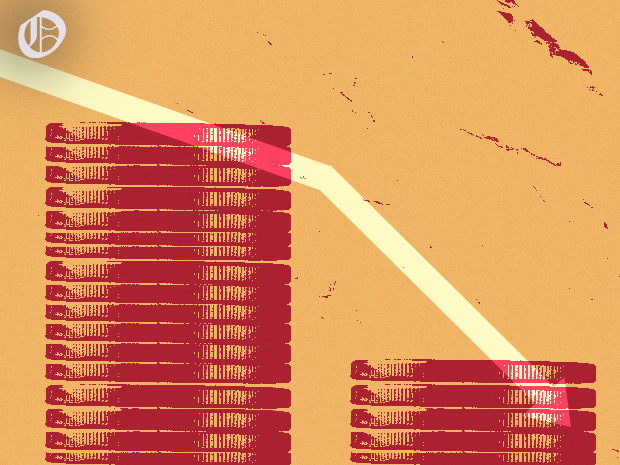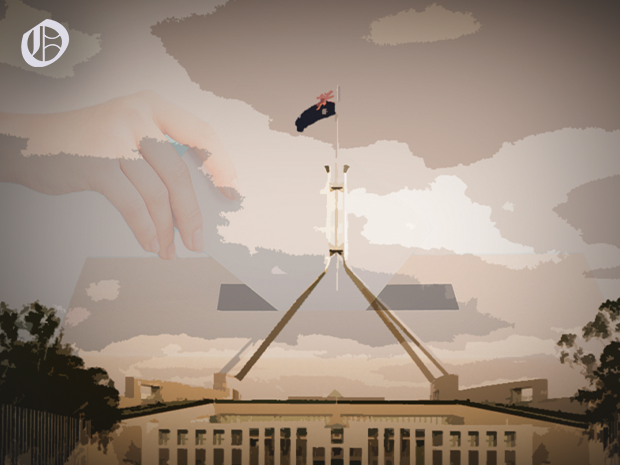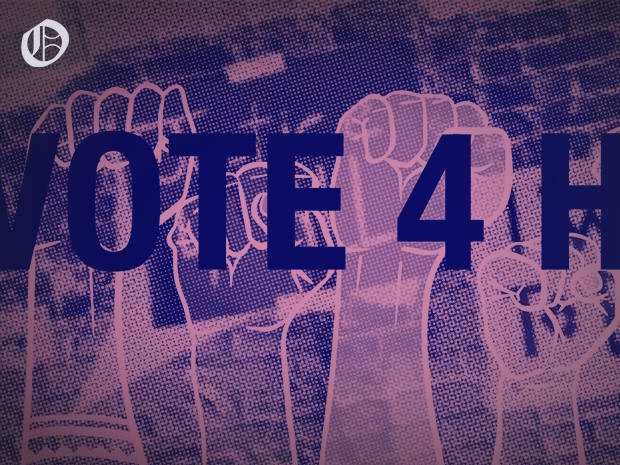We’ve All Seen This Film Before: A History of Cost-Cuts At ANU

By Sarah McCrea
The ANU’s severe budget deficit is more than just a headline, resulting in a bevy of proposed cost-cuts that affect staff and students alike. For months, media groups such as the ABC, Canberra Times, and the Australian Financial Review have commented on the university’s financial situation. Members of ANU staff have described themselves as “distressed and scared for their livelihood” due to the proposed changes. Groups such as No Cuts At ANU have lobbied for proposed cuts to be retracted.
However, though the cost-cuts proposed in the university’s Renew ANU plan are more extreme than those in the past, they are not unprecedented. Notably, in 2013, the university cut 10 per cent of the professional workforce to improve its financial position.
Despite ANU’s generally strong financial figures, cost-reduction measures are not infrequent and range from staff cuts to decreased funding for grants and teaching schools.
Here, Observer presents a brief record of ANU’s cost-cutting, cost-management, and revenue-maximising measures over the past decade. All net operating financial figures are taken from ANU’s official Annual Reports.
In 2015, ANU experienced a strong net surplus and a slight operating surplus. Cost-cutting measures taken throughout the year primarily focused on job and budget cuts at the College of Asia and the Pacific (CAP). The panel involved in this decision cited low student numbers as a reason for the actions, and the avoidance of potential operating deficits.
Discussion and implementation of staff cuts at CAP continued into 2016, with the Asian Studies Association of Australia suggesting this would “threaten ANU’s international reputation.”
An article in 2016 further addressed these cuts, as well as staff response to wider proposed cuts. Internally, anonymous ANU staff expressed mistrust of the administration and the legitimacy of its actions, with financial “numbers shifting with every presentation”. The official reported annual figures included an increased operating surplus.
In 2017, ANU’s net surplus and operating surplus increased substantially. No prominent cost-cutting measures were imposed by the university this year, but cost-cuts were put in place by the federal government in the form of a $2.2 billion funding cut to Australian universities.
A statement from ‘Good Universities’ suggested this would impact cost-management strategies for institutions such as ANU. These funding cuts were in place throughout 2018 and 2019.
During 2018, ANU ‘axed’ a School of Music course offered to high-school students, stating it was a response to a loss of its funding from the ACT government.
Additionally, in 2018, despite experiencing strong financial growth, international student fees at ANU increased by 9.5 per cent, increasing revenue for the university into the future.
In this year, ANU decided to cap the amount of student enrollments available, effectively stabilising student numbers. ABC News alleged this was a response to the government’s 2017 funding cuts, continuing to reference the past expenses of construction at ANU that occurred to accommodate growing student numbers.
In 2019, the university experienced a significant operating surplus and a net surplus of over $300 million.
However, in a 2019 article with the Sydney Morning Herald, former ANU Vice-Chancellor Brian Schmidt proposed that the university’s financial state would decline. The article suggested that the “university actually loses money on every undergraduate student it accepts – with per student funding insufficient to cover the high cost of the highest staff to student ratio in the country.”
With the arrival of COVID, ANU experienced both a net deficit and an operating deficit after over a decade of surpluses. This had long-term implications for its finances, with the university removing $200 million in cash from its reserves to be used for “unexpected expenditure.”
In October of 2020, the university released ‘The ANU Recovery Plan,’ containing cost-cutting measures such as pausing staff recruitment processes, staff deferring pay rises, and cutting staff numbers by 465. This plan included a ‘Change Management Process’ for several portfolios, including the School of Arts and Design, where workshop availability, types of staff positions, and general staff were all reduced.
Another important figure this year is the government’s revision (by ANU’s request) of the university’s debt limit, which restricts the amount of money ANU may borrow.
In 2020, this limit increased to $800 million and has remained the same since.
The university had offset COVID’s financial impacts by 2021, with a slight operating surplus. ANU’s Financial Results for 2021 outline reductions in salary-related expenditure. The report states this was composed of a “decrease in annualised full time equivalent (FTE) employees” and a “decrease of $48.9 million in voluntary separation expenses.”
These positive financial results did not continue into 2022, with budget deficits moving into the hundreds of millions of dollars. Also that year, the university decreased funding to Research Block Grant (RBG) due to “underperformance”.
During 2023, ANU announced a temporary closure of the Art & Music Library due to hail damage, with the library to turn into a study space upon reopening.
Riotact alleged that this was an example of ANU’s cost-cutting as the university was “continuing to hunt for savings” after experiencing another triple-digit operating deficit. Currently, ANU states that parts of the Art & Music library are “likely to be available to students and staff in Semester 1 2025.”
Towards the end of 2023, ANU released its ‘2024-2028 Financial Plan,’ which intended for the university to reach a financial surplus by 2026. This would be achieved through increasing student numbers and implementing successful cost-reduction measures.
ANU has not released its Annual Report or official financial results for 2024. Last year, the university projected that the operating deficit for 2024 would be over $200 million. However, it was recently revealed that ANU had “overstated” the budget deficit by $60 million.
Based on the 2024 projection, last October the ‘2024-2028 Financial Plan’ was deemed ‘unfeasible’ and replaced with ‘The ANU Academic Colleges Realignment Plan’ and ‘Renew ANU’.
The Academic Colleges Realignment Plan’ includes cost-cutting measures such as “disestablishing” the ANU College of Health and Medicine and “realigning” five schools. Two of these realigned schools were within the now-disestablished College of Health and Medicine, and three of the schools were from other colleges.
‘Renew ANU’ outlines a broader response to the university’s financial position, including the much-discussed $250 million reduction in operating costs and cost reductions in areas such as travel, IT, and facilities. The university describes ‘Renew ANU’ as a way to transition the university “from a decentralised operational model to a cohesive, strategic, and centralised model.”
ANU also requested staff to forgo their 2.5 per cent pay rise scheduled for December 2024. ‘Renew ANU’ cited staff-costs would have to be reduced by $100 million in order for the university to reach its financial targets.
If the pay rise was forgone, it would reduce staff costs by approximately $15 million. In November, ANU staff voted on this proposal, with 88 per cent of voters voting against this request.
To contribute to salary-related cost reductions, Vice-Chancellor Geneive Bell lowered her salary by 10 per cent, down from $1.1 million to $1 million.
The consequences of accumulating cost-cuts continued in this year, both financially, academically and socially. Cost-reduction measures taken by ANU have led to course cuts and more students per tutorial.
More recently, the university has introduced a new voluntary separation scheme. The scheme would allow ANU to decrease staff, bringing them closer to the numbers needed to achieve salary-related cost reductions.
The university has publicly outlined that initial consultation for the ‘Renew ANU’ concluded on the 19th of March, with the closure of a feedback form for ANU staff to comment on proposed changes.
It further states that there will be ‘broader consultation and planning phases’ from 2025, potentially moving into 2026. Implementation of the changes is projected to occur in early to mid-2026.
This most recent round of cost cuts has highlighted the precarious nature of ANU’s financial position. However, while the university’s current operating deficits and amount of general debt are anomalous, the types of cost-reduction measures we are seeing are not.
Graphics by Shé Chani
Know something we don’t know? Email [email protected] or use our anonymous tip submission.
If you have an issue with this article, or a correction to make, you can contact us at [email protected], submit a formal dispute, or angry react the Facebook post.
Want to get involved? You can write articles, photograph, livestream or do web support. We’re also looking for someone to yell “extra!” outside Davey Lodge at 1AM. Apply today!









